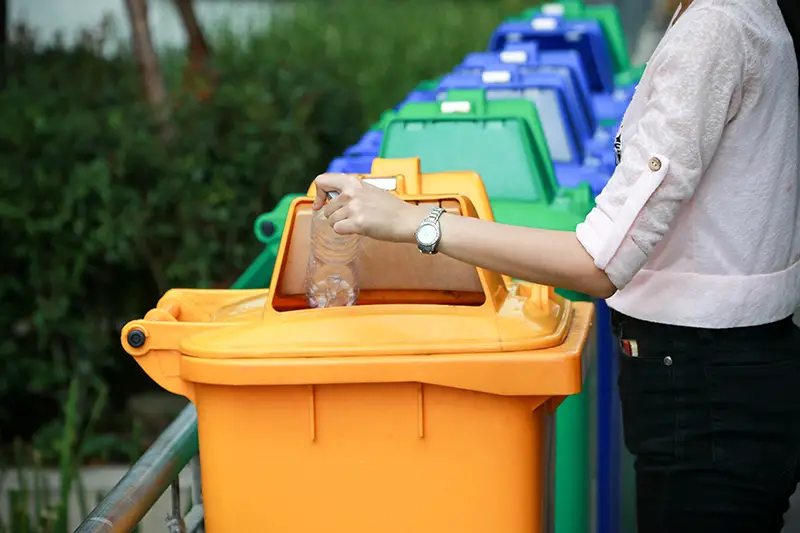Click here to get this post in PDF
The best way to cut down on waste in your business is to do an audit of what you’re throwing away. You can do this by tracking how many bins your company goes through over time or by weighing the contents before and after they’re thrown out. However, if you don’t want to deal with all the extra work involved in doing that, there are still ways for you to reduce waste in your business without having to measure everything first:
Review what’s being thrown out.
In the first step of this process, you’ll want to review what your organization is throwing away. You may be surprised at how much waste is produced and how many items can be reused or recycled.
It’s important to look through the trash in a way that helps identify opportunities for waste reduction. For example, if you notice that bottles of cleaning solution are being thrown out regularly, it might be worth investigating whether there are more efficient cleaners available at a lower cost than those currently being used—and therefore saving money in the long run.
Type of waste audit.
A waste audit is a systematic and detailed analysis of the waste generated by a business. It can cover all types of waste, including resource materials and waste hazardous or regulated materials.
A waste audit provides valuable information on how your business operates and what it produces in terms of waste, so you can make changes to reduce environmental impact by reducing or preventing waste production. This can help you meet your legal responsibilities for minimizing pollution and protecting local environments from harm.
You should carry out regular audits on an ongoing basis so that any necessary improvements are made before they become expensive problems.
Remove garbage cans.
- Remove garbage cans. This can be a fire hazard, tripping hazard, and eyesore all at once. If you have a skip bin hire then consider removing the garbage bins altogether. If you do keep a trash can around, make sure that it has wheels so it’s easy to move out of the way when not in use.
- Encourage employees to use their bags/cans for their lunches and drinks when they leave the office every day instead of providing free ones from your kitchenette or break room area. That way you don’t end up with too many plastic bags or cans that need to be taken home!
Recycle more materials.
While recycling isn’t a cure-all for the waste problem, it certainly helps. It’s good for the environment, good for your wallet, and it creates jobs.
Recycling can mean different things depending on the material you’re trying to recycle. Recycle paper, plastic, glass bottles, and metals such as aluminum cans and tin foil. Many communities offer recycling bins for these materials set up throughout their city or town so that residents can drop off their recyclables at various locations around town without having to go all the way back home first!
Reduce your use of cleaners and other chemicals.
- Reduce your use of cleaners and other chemicals.
- Use fewer chemicals.
- Use more natural products.
- Use environmentally friendly products.
- Clean with steam instead of chemicals. Be aware that some chemical cleaners are expensive, so this can save you money in the long run! Chemicals can also be dangerous to the employees who use them if used improperly, so “going green” is a great way to protect your workers from harm and help protect our environment from harmful chemicals being released!
Buy in bulk.
Buying in bulk is a great way to reduce your waste and costs. Here are some examples of how buying in bulk can help:
- Buying organic produce in large quantities will save you money and reduce packaging waste by eliminating the need for individual plastic bags or foam trays.
- Buying meat from local farms means less transportation, which reduces greenhouse gas emissions.
Encourage employees to use less paper.
Encourage employees to use less paper wherever possible. For example, you can:
- Use online forms instead of paper forms whenever possible. This will save on printing costs and reduce the amount of paper that needs to be shredded or recycled.
- Use email for internal communications instead of sending emails with attachments that have to be printed out and distributed.
- Use email for external communications instead of mailing letters or invoices by post. The same goes for supplier communications and marketing materials like flyers and brochures, which you can also send electronically via email or as a digital file in Google Drive or Dropbox.
Reduce waste in your business!
Reducing the amount of waste your business generates can help you save money, reduce your environmental impact and raise employee morale. It is a win-win situation for all!
It will take effort and may involve some changes in procedures or workflow, but this article should help get you started with reducing waste in your company.
Conclusion
By following these tips, you can reduce your business’s waste and save money.
You may also like: Role Of Waste Removal Experts For A Healthy Environment
Image source: Shutterstock.com

